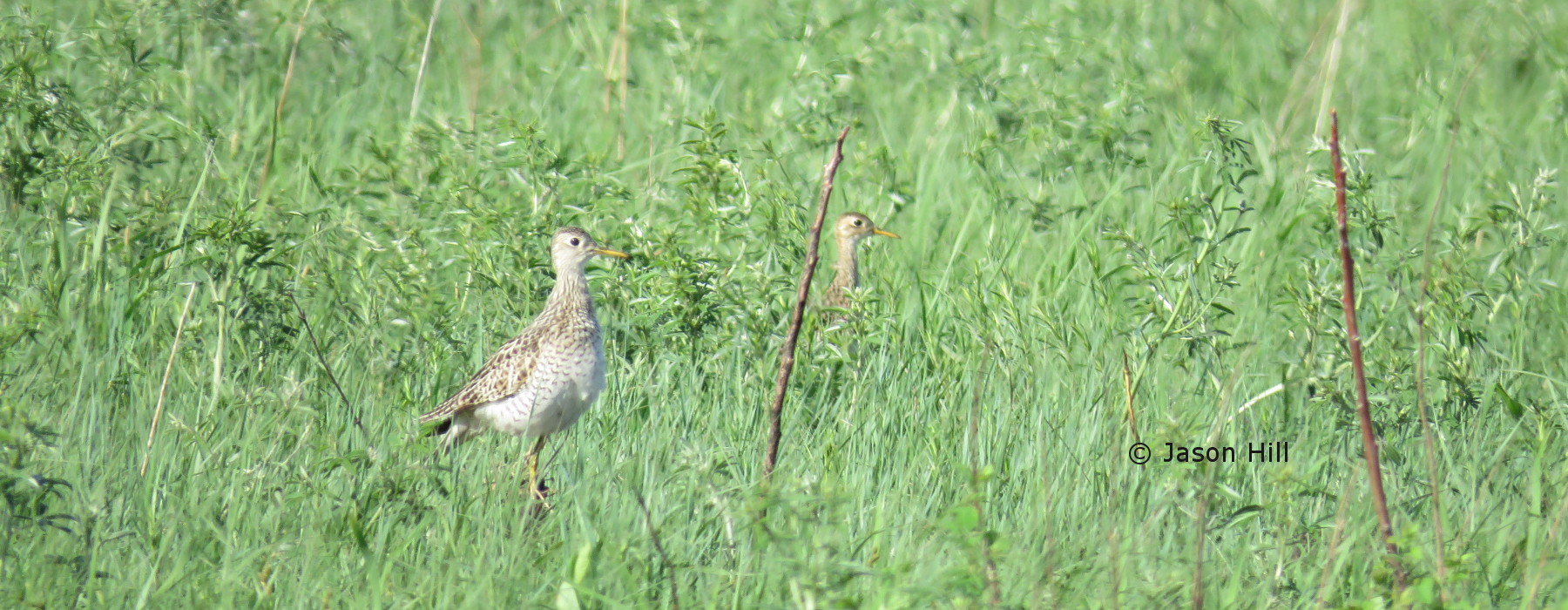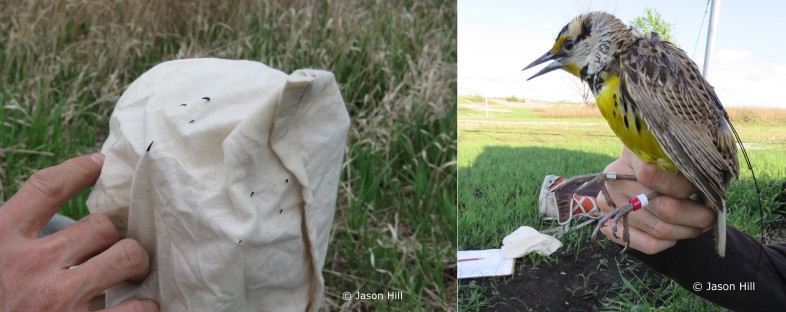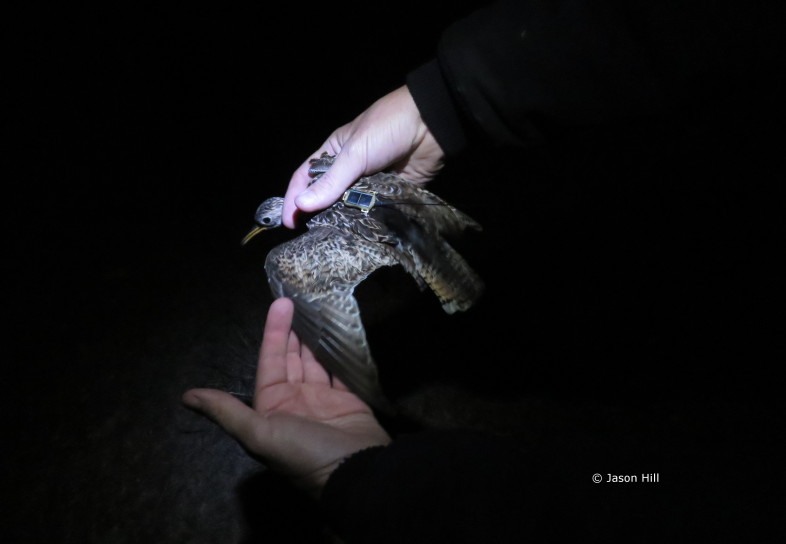
Two Upland Sandpipers forage in the grassland at Fort Riley, Kansas. © Jason Hill
Grassland bird migration is a mystery that VCE is helping to unlock, thanks to the use of cutting edge technology. This summer VCE biologists, Roz Renfrew and Jason Hill, are finishing up field efforts to track the year-round movements of Eastern Meadowlarks (Sturnella magna), Upland Sandpipers (Bartramia longicauda), and Grasshopper Sparrows (Ammodramus savannarum) from breeding populations in Kansas, North Dakota, Minnesota, Wisconsin, Maryland, and Massachusetts.
How do we do it? We put small geolocators onto the Grasshopper Sparrows, and GPS tags onto the backs of the Eastern Meadowlarks and Upland Sandpipers. Last year we deployed the miniature geolocators onto Grasshopper Sparrows, and in a few weeks we will begin to recapture those birds to retrieve and decipher their movement data. “Capturing Grasshopper Sparrows is fairly easy,” says Jason Hill, who did his PhD research on Ammodramus sparrows. “Capturing Eastern Meadowlarks and Upland Sandpipers, however, is downright difficult.” Hill and his crews capture Upland Sandpipers at night with hand nets while the birds roost in large open grasslands. “We cleverly and collaboratively ‘herd’ the meadowlarks into the net like a wild goat,“ says Hill, “except that they have talons.”

An Eastern Meadowlark’s claws (talons?) pierce the cotton bird bag (left). Jason Hill prepares to release this bird after attaching a GPS tag (right) at Konza Prairie, Kansas. This is the first Eastern Meadowlark to receive a GPS tag to our knowledge. © Jason Hill
Since last week, Hill and his field crew leader, Clay Graham, have tagged 8 Eastern Meadowlarks and three Upland Sandpipers in Kansas at Konza Prairie and Fort Riley. By the end of this field season, VCE biologists will have deployed approximately 40 (total) GPS tags onto Upland Sandpipers and Eastern Meadowlarks. These tags will collect these birds’ movement data for the next year, and then the tags will transmit the data to us over the web. By comparing the movement data from birds across the U.S., we can begin to understand how and where these bird populations are connected. “These three bird species have been declining for at least the last 60 years,” says Hill, “and we hope these data will play a crucial role informing the management and conservation of these species.”

Jason Hill, Brett Sandercock (Kansas State University), and Clay Graham prepare to relase an Upland Sandpiper wearing a solar-powered GPS tag at Konza Prairie, Kansas. © Jason Hill

This information is fascinating and will reveal secrets of these species. Great work!